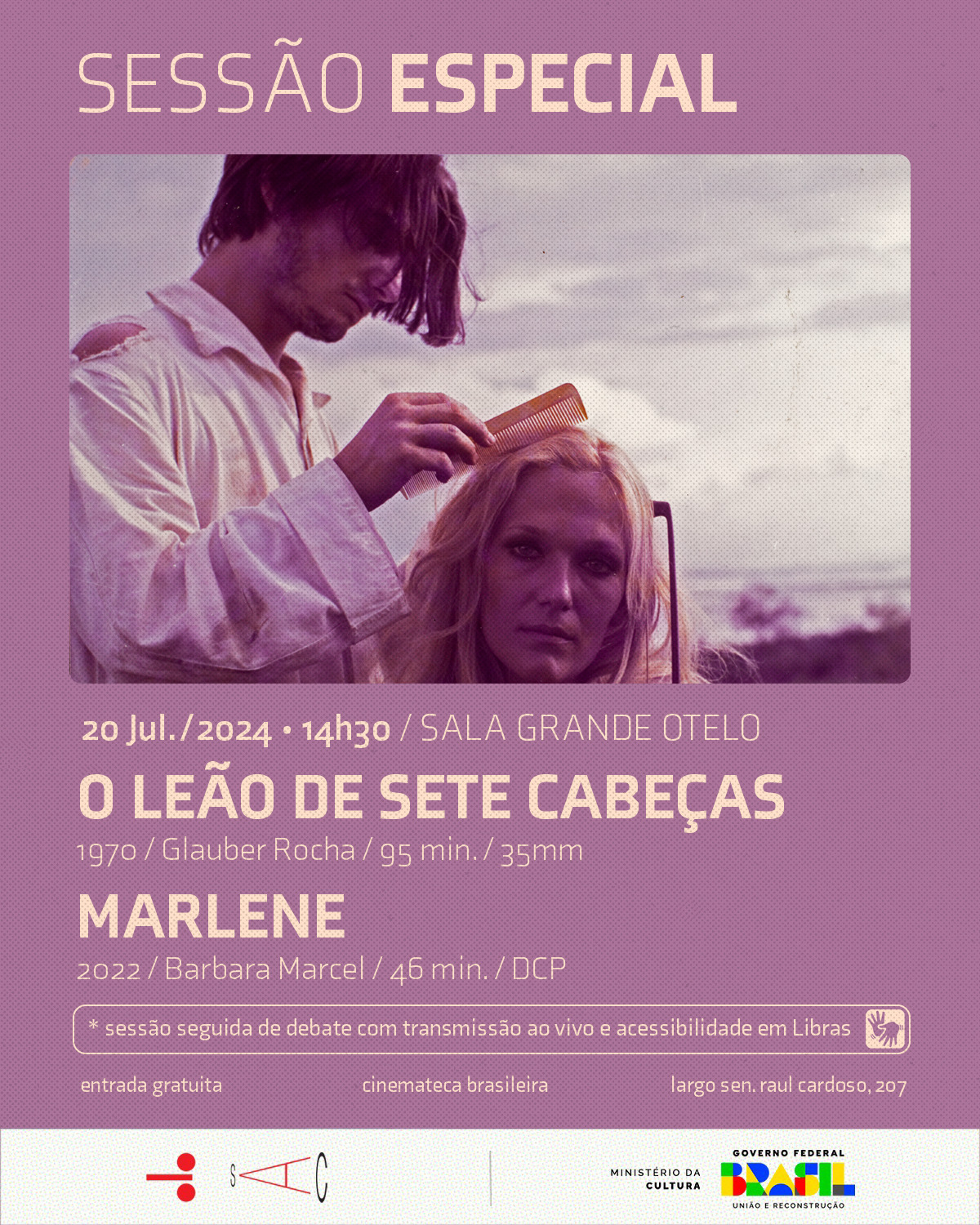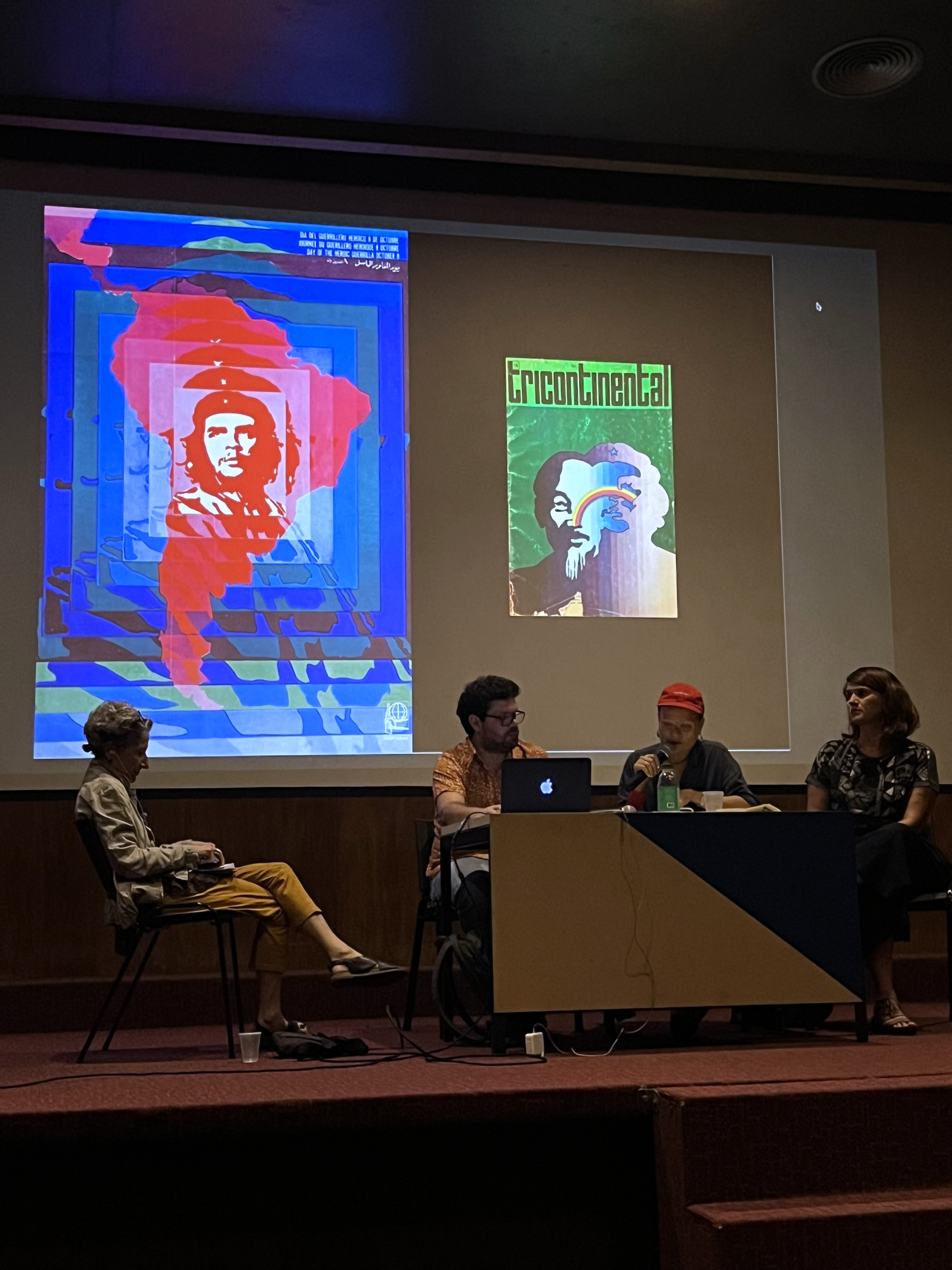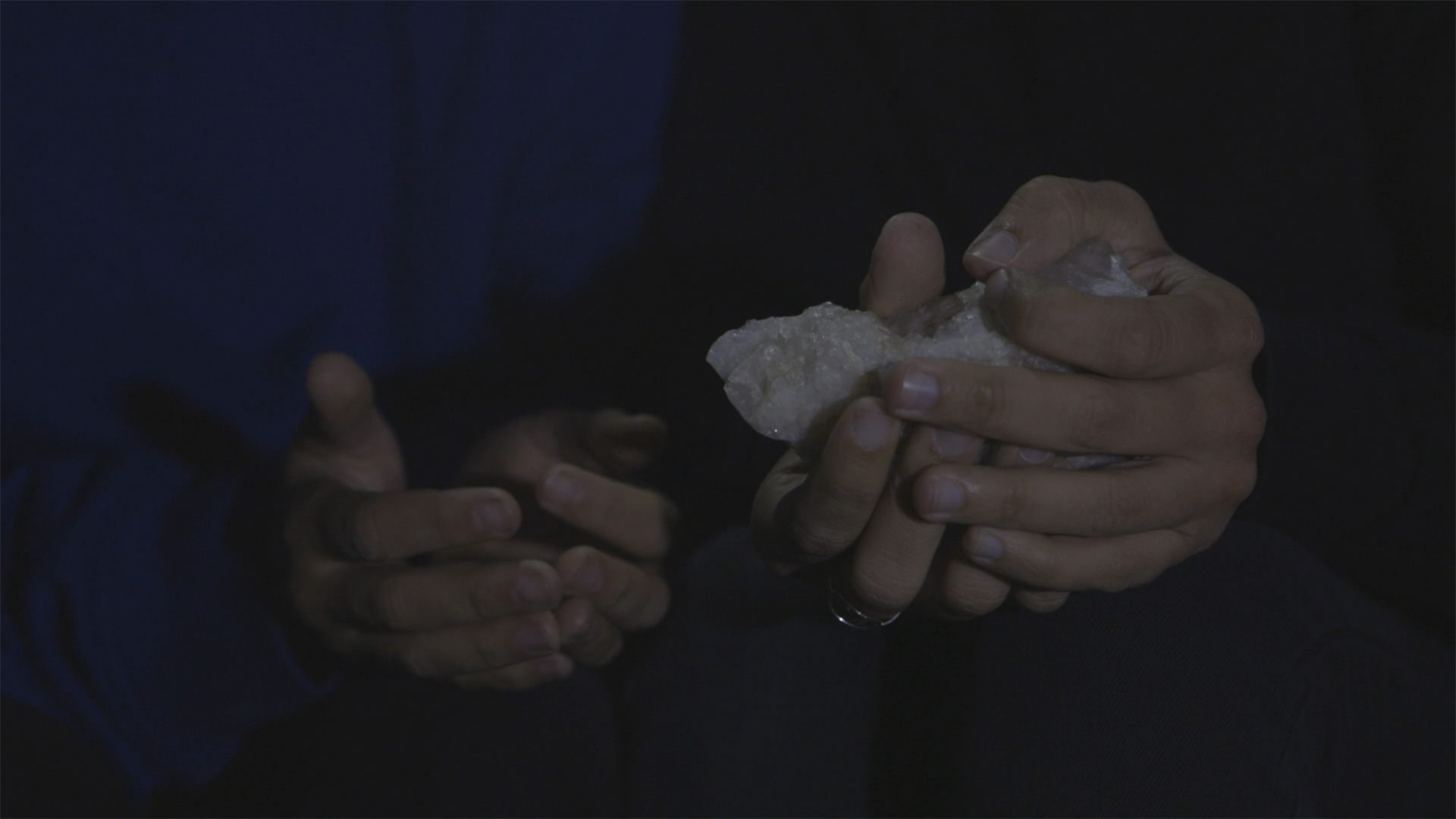CINEBH
27.09.2024, Debate STAGES OF LATIN AMERICAN FILM: CO-PRODUCIONS AND THEIR CHALLENGES as part of the 18th CINEBH International Film Festival in Belo Horizonte, Brazil.
27.09.2024, Debate STAGES OF LATIN AMERICAN FILM: CO-PRODUCIONS AND THEIR CHALLENGES as part of the 18th CINEBH International Film Festival in Belo Horizonte, Brazil.
Latin American cinema is increasingly marked by films and filmmakers traveling to screenings at festivals, to study, to take part in development laboratories and to market meetings. The internationalization of experiences and co-productions between companies from different countries are seen as expanding possibilities for films and careers. How are these international experiences influencing new creations and international co-productions? How have they broadened the possibilities? What funds and laboratories are being accessed? Does internationalization have its price?
Guests:
Barbara Marcel - director and producer of Suraras | Brazil
Ernesto Jara Vargas - director of Altamar | Costa Rica
Ivette Liang - Head of Production at Nuevas Miradas | Cuba/Colombia
Juan Pablo Polanco Carranza - director of Carro Pasajero | Colombia
Luana Melgaço - partner at Anavilhana and producer of Praia Formosa | Brazil
Mediator: Paulo de Carvalho - producer and collaborator of Brasil CineMundi | Germany

CINEMATECA BRASILEIRA
20.07.2024, Double screening of Glauber Rocha’s film DER LEONE HAVE SEPT CABEÇAS and Barbara Marcel’s medium-length film MARLENE, followed by a conversation between Marcel, Mariana Queen Nwabsili and Mateus Araújo, at the Brazilian Cinematheque. São Paulo, Brazil.
20.07.2024, Double screening of Glauber Rocha’s film DER LEONE HAVE SEPT CABEÇAS and Barbara Marcel’s medium-length film MARLENE, followed by a conversation between Marcel, Mariana Queen Nwabsili and Mateus Araújo, at the Brazilian Cinematheque. São Paulo, Brazil.
In a special double screening, DER LEONE HAVE SEPT CABEÇAS (Glauber Rocha, 1970) and MARLENE (Barbara Marcel, 2022) were shown at the Cinemateca Brasileira. While DER LEONE, filmed in Congo Brazzaville in 1969, is part of Rocha's Tricontinental Cinema project, MARLENE, filmed in Kinshasa, just across the river, is the result of the screening and reception of Rocha's film today and the debates about militant cinema. The screening was followed by a conversation between Marcel, journalist, researcher and film festival curator Mariana Queen Nwabsili and film studies professor Mateus Araújo.
Link to the event.


COMMON IMAGINARIES
4th Research Seminar on Art and City_DESILHA 2024, Federal University of Rio de Janeiro.
4th Research Seminar on Art and City_DESILHA 2024, Federal University of Rio de Janeiro.
Lecture Performance at the opening of the event, alongside Livia Flores, André Leal and Giovanni Festa, at Centro Cultural da Justiça Federal in Rio de Janeiro.


Screening of the films HUMO SOBRE LOS HUMEDALES and MARLENE by Barbara Marcel followed by a conversation between the film director and Mariana Queen Nwabasili at Cinemateca do MAM, Rio de Janeiro, Brazil.

TO SLIP, TO SLIDE, TO GLITCH
13.6.2024, Other Transitions - Screenings as part of the exhibition "to slip, to slide, to glitch" by Larisa Crunțeanu & Sonja Hornung; contributions from and events with Mareike Bernien & Alex Gerbaulet, Barbara Marcel, Ann Oren, Naomi Rincón-Gallardo, Tama Ruß, Nikola Stoyanov; in curatorial collaboration with Katharina Koch & Sylvia Sadzinski, at alpha nova & galerie futura, Berlin.
13.6.2024, Other Transitions - Screenings as part of the exhibition "to slip, to slide, to glitch" by Larisa Crunțeanu & Sonja Hornung; contributions from and events with Mareike Bernien & Alex Gerbaulet, Barbara Marcel, Ann Oren, Naomi Rincón-Gallardo, Tama Ruß, Nikola Stoyanov; in curatorial collaboration with Katharina Koch & Sylvia Sadzinski, at alpha nova & galerie futura, Berlin.
Screening event: Other transitions
Wannabe starlet trees, a phone sex worker in Vetagrande Zacatecas, Mexico, and animated Harz Roller canaries in Tenerife precede an underground conversation about transitioning. These works reshuffle the categories of human, nature, and artifice, pointing towards moments of indefinition, refusal, and chasing collective dreams against the odds.
Congratulations! You are still in the running for becoming, Ann Oren, 2015 (10:22)
Heavy Blood, Naomi Rincón-Gallardo, 2018 (18:43)
Excerpts from Des Goldes Klang (Golden Tone), Barbara Marcel, 2023 (ca. 40:00) - Exhibition of the channels "Animation" and "Interview with Tom".
Followed by an online artist talk with Barbara Marcel.


LATEX: CRITICAL INFLECTIONS ON (NEO)EXTRACTIVISM IN LATIN AMERICA
Artist Talk – ‘Ciné-Cipó – Cine-Liana at Amazon Tall Tower Observatory’. Barbara Marcel (Bauhaus-Universität Weimar) in conversation with Delfina Cabrera, Ariadne Y. Collins, Marlon Miguel at the Symposium organized by Delfina Cabrera, Ariadne Collins and Marlon Miguel in collaboratio with materia – DLCL Focal Group (Stanford University) at ICI Berlin - Institute for Cultural Inquiry.
27.09.2021, 19h30
Artist Talk – ‘Ciné-Cipó – Cine-Liana at Amazon Tall Tower Observatory’. Barbara Marcel (Bauhaus-Universität Weimar) in conversation with Delfina Cabrera, Ariadne Y. Collins, Marlon Miguel at the Symposium organized by Delfina Cabrera, Ariadne Collins and Marlon Miguel in collaboratio with materia – DLCL Focal Group (Stanford University) at ICI Berlin - Institute for Cultural Inquiry.
27.09.2021, 19h30
‘The things that white people work so hard toextract from the depths of the earth, minerals and oil, are not foods’, as shaman and Yanomami spokesperson Davi Kopenawa pointedly observes in The Falling Sky. Extraction has been historically associated with the removal of underground materials, whereas extractivism is a broader notion connoting a primarily white, colonial mode of accumulation of the West. For most Latin American countries, their natural wealth became their curse, permeating both the material and the symbolic realms. The extractive regime binds the environment and rules the lives of those subjugated to it by transforming them into mere commodities. In the late 19th and early 20th centuries, rubber exemplified particularly well the devastating consequences of extractivism. Latex fulfilled the industrial dream of an ‘extraordinary substance’, the first material whose plasticity made it suitable to become everything else: waterproof garments, automobiles, communication infrastructure, mechanized warfare. Throughout its extraction boom, the Amazon Rainforest supplied around 60% of the world’s rubber demand. This hunger for rubber reflected the expanding omnipotence of global capitalism with ruinous consequences for the environment as well as for the local populations. During the overlooked genocide along the Putomayo River, according to John Tully, for every ton of rubber extracted and dispatched to the Global North, seven indigenous lives were lost.
The removal of large quantities of natural resources from the Global South has been foundational for meeting the increasing demand for goods of the centers of nascent capitalism. This logic never ceased and what one calls today neo-extractivism reproduces the colonial and subordinated condition of the so-called peripheral countries. Yet, this extractive rationality does not only secure the production of goods but extends itself to the production of knowledge and to the import of epistemic frameworks that explain local realities. Cognitive extractivism, claims Silvia Rivera Cusicanqui, privileges the ‘center’ as the producer of theoretical and interpretative models whereas the ‘periphery’ remains relegated to the status of the illustrative case. Exported raw material are subsequently converted into concepts and shipped back to their places of provenance with added value. The symposium seeks to examine and question the different modes of extractivism that have marred and marked the histories of Latin America and the Caribbean. The distinctive qualities of rubber (plasticity, isolation, expansivity, erasure) are the starting point for a contemporary inquiry of (neo)extractivism. Its political, environmental, cultural and social facets are to be analyzed, in particular as they are critically undertaken by literature and the visual arts. Artists and scholars will explore this mode of accumulation in its intimate relationship to the production and circulation of theory and cultural capital; to epistemicide and necropolitics; and to a restrictive worldview of ‘nature’ as an inert reservoir for economic exploitation.


